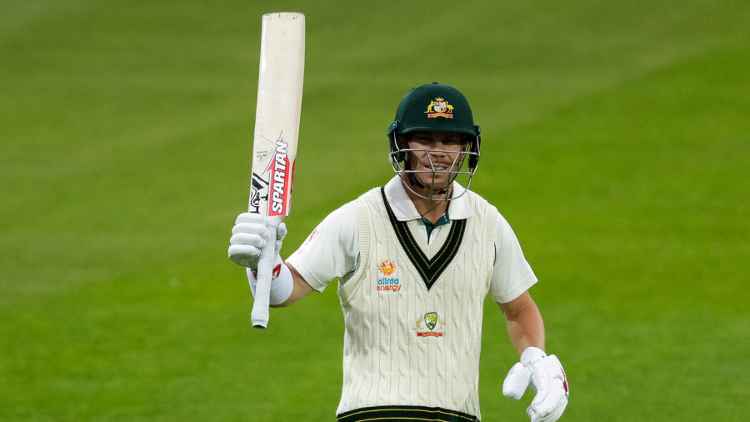Not again! Should Warner's 'six' have been a five?
by Sidharth MongaIt got a lot of attention - enough for the MCC to reportedly consider a review - in the World Cup final but it turns out the umpires might have repeated their mistake with awarding overthrow runs for much less dramatic consequences during the Adelaide Test. In the 24th over of Australia's innings, David Warner tucked a ball towards long leg and rushed off for a second. The throw from Shaheen Afridi was wayward and went for four overthrows. Warner was awarded six runs, much like Ben Stokes was in the World Cup final, and brought up his half-century.
Upon review of footage in the World Cup final, it was clear that the throw had left the fielder's hand before the batsmen had crossed each while taking the second run. In such cases, according to the MCC laws, only five runs should be awarded to the batting team. In the end, England tied the final with New Zealand, and then also the Super Over and won the World Cup on a boundary countback.

This one run is unlikely to be that consequential in the Adelaide Test but footage reviewed by ESPNcricinfo again confirmed the ball had left Afridi's hand well before Warner and Marnus Labuschagne had crossed each other. This is what Law 19.8, which deals with overthrows or a wilful act of a fielder.
"If the boundary results from an overthrow or from the wilful act of a fielder, the runs scored shall be any runs for penalties awarded to either side and the allowance for the boundary and the runs completed by the batsmen, together with the run in progress if they had already crossed at the instant of the throw or act."
Umpire Kumar Dharmasena, who had made the fateful call at Lord's, later explained the practical challenges of making such calls. On-field umpires are allowed to refer dismissals to the third umpire and contentious boundary calls, but this is just the kind of decision that needs a video review. The two events, the release of the throw and the crossing of batsmen, are happening tens of metres apart, which makes it near impossible for a human eye to decisively say what happened first. Especially when you are also trying to get into position should there be a run-out appeal while keeping an eye on any short runs and if the batsmen are running on the danger area.
Until a change is made to make the law more practical to implement or the ICC allows such referrals to the third umpire, such errors are likely to continue because the umpires are practically guessing what happened.